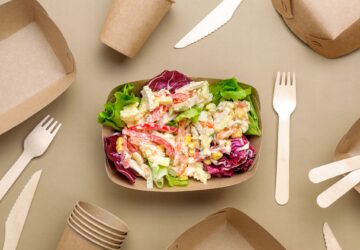They are interesting creatures, these millennials.
Born in a time when everything is at their disposal (readily available with a mere tap on their smartphones), it must be easy to overindulge in life. Food, for instance, has gone global. International brands are sprouting up everywhere, from The Bistro Group’s American explosion (Texas Roadhouse, Moe’s, and Denny’s) in Bonifacio Global City to a Jollibee branch in Skokie, Illinois, targeting a generation that is (mostly) intelligent, adventurous, and spoiled for choice.
With the possibilities close to endless, it’s interesting to note the kind of eating habits these twentysomethings are developing. Their purchasing power may not be as substantial as aging Gen-Xers and retirees with their pensions, but they know how to harness their power better than the rest—by way of information.
They make more informed dining decisions
It’s no longer just a matter of checking the nutritional values of food. Millennials have made it a habit to know how much carbs, proteins, sugar, and fat they are ingesting. They need to know what they’re eating, and macronutrients are just the basics.
Armed with knowledge not formerly available to previous generations, millennials are turning to diets that are more beneficial to their overall well-being.
These days, origin has become a point of interest. For coffee and chocolates, flavor profile is dictated by location, similar to wines’ terroir. For livestock, people care to know how the animals were treated when they were alive—what they ate, if they were happy. All this information matters to millennials since they want to know exactly what is going into their bodies, and perhaps, if it’s well worth the calories.
Health-driven diets, not just for weight loss
Armed with knowledge not formerly available to previous generations, millennials are turning to diets that are more beneficial to their overall well-being. Weight loss is merely an added bonus, the way going gluten-free rids your diet of most refined carbs and sugars, or how Paleo’s focus on whole foods eliminates processed grains altogether. This, if you look at it, is more sustainable than the crash diets of old, when the end goals were measured with BMIs and not LDL.

They drink more alcohol
It’s an age thing. Like all twentysomethings that came before them, this is usually the time that alcohol takes up a huge chunk of their social habits. But it’s not just about getting wasted anymore. Brunch is bigger than ever and people are drinking at all times of the day. Plus, the options are more varied. Millennials like to drink the good stuff. There’s a wider appreciation for flavor over ABV. Hence the rise in popularity of craft beers as well as small-batch gin and bourbon all over the world. Cocktails are less sugary and mixologists are constantly widening their repertoire as well as their infusions. This generation might not be rich, but when they do have the money, they know where to spend it.
Instagram has become the marketing tool of choice of the modern restaurateur for many reasons: It’s a nifty digital album of all their food porn as well as a direct line to their regulars and potential guests.
Cheat days are sacred
Just because they fill their bodies with the good stuff doesn’t mean they are not capable of sin. Millennials do allow themselves to indulge and when they do, they go all out. Fatty and rich are still in fashion: wrap a candy bar with bacon and that’s going to sell like proverbial pancakes. Tacos, pizza, hotdogs, and ice cream are reserved for weekends or for those days when the craving strikes. But, since health is wealth for this generation, they balance it out with exercise. Lots of it. Cycling (both indoors and outdoors), surfing, and running are popular choices for those who are allergic to the gym while all forms of yoga continue to promote overall wellness.
Social media dictates their choices
Instagram has become the marketing tool of choice of the modern restaurateur for many reasons: It’s a nifty digital album of all their food porn as well as a direct line to their regulars and potential guests. You might call it the modern Zagat guide, if you may be so bold as to dethrone the revered restaurant list. Instead of faceless reviews from random restaurant goers, it allows food lovers to follow their favorite food writers and industry insiders to see what’s new and, more importantly, what’s good. And, more often than not, it’s all in real time.
Add to that other apps that allow easy access to food deliveries and restaurant reservations, which come with special discounts, if you’re savvy. This is how technology is changing, or at least heavily influencing the way young people are eating.





